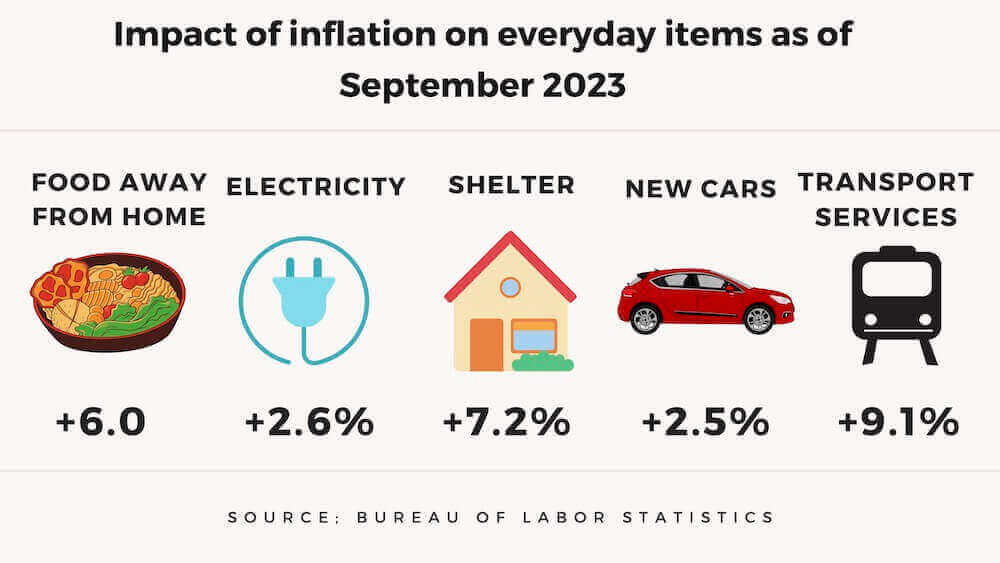Now that the final data have been announced on the inflation rate for the third quarter of 2023, we know the 2024 cost of living adjustment (COLA) for federal retirees will be 3.2%. Some retirees are going to be disappointed with the 2024 increase.
Last year, the COLA was 8.7%— the highest in more than 40 years. In 2022, the COLA was 5.9%—the highest it had been in 40 years. It is probably good news that the 2024 COLA will only be 3.2%—considerably less than it was the previous two years.
Inflation is different in this era. When Jimmy Carter was president, inflation grew gradually. It was not a sudden jolt.
While politicians like to tout that inflation is receding, they ignore the fact that prices have not gone back down. Our dollars are worth less than they were several years ago.
This time around, everyone remembers a recent economy with lower, stable prices. Reassurances that inflation is “easing” do not sit well when standing in the grocery store or at the gas pump store looking at prices. Once inflation is introduced, it sticks around for a while. Inflation for September came in at 3.7%.
Even with higher COLAs, the increases have not matched inflation. Our standard of living has declined. The result is that inflation continues to make headlines and inflation is still having a big impact on household income.
Calculating the 2024 COLA
FedSmith published an article earlier this week outlining how the COLA is calculated. This same method is used every year using the new data. Here is how it unfolds for the 2024 COLA.
The Consumer Price Index for Urban Wage Earners and Clerical Workers (CPI-W) increased 3.6% over the last 12 months to an index level of 302.257. For the month, the index increased 0.2% prior to seasonal adjustment.
This is a 3.5% increase from the third quarter of 2022. It is an increase of 3.6% over the last 12 months.
- CPI-W readings are taken from the current year’s third quarter (July – September).
- These data are compared to the average CPI-W reading from the previous year’s third quarter (2022). The average CPI-W for the third quarter of 2022 was 291.901.
- The average reading from the current year’s third quarter (2023) is compared to the figure from the third quarter of 2022. This comes out at 3.2%.
- The average CPI-W reading went up in 2023. The difference, rounded to the nearest 0.1%, is what beneficiaries will receive as an increase in 2024. (This article explains in detail which federal retirees do not receive the full COLA and the reasons for the difference between CSRS and FERS retirees.)
- When the figure is lower— indicating deflation—no adjustment is made to the COLA. That happened several times under the Obama administration. This has not happened under the Biden administration.
Will Recent Federal Retirees Receive the Full 2024 COLA?
To receive the full COLA for 2024, a federal retiree’s annuity or a survivor annuity must have started no later than December 31, 2022. If the retirement annuity did not start by this date, the increase is prorated under both CSRS and FERS retirement plans.
Prorated accounts receive one-twelfth of the increase for each month they receive benefits. For example, if the retirement benefit started on November 30, 2023, the prorated COLA would be one-twelfth of the full COLA.
Keep in mind that the annual COLA also impacts Social Security benefits. All federal employees who are enrolled in the FERS system are covered by Social Security. These employees contribute to the program at the current tax rate and are eligible for the same benefits as all other workers covered by the program.
What is the CPI-W?
The annual inflation rate often publicized in news articles is not always the same as the one used to calculate the annual inflation rate for the COLA.
The federal government uses the Consumer Price Index for Urban Wage Earners and Clerical Workers (CPI-W) to calculate the COLA.
This index is based on the expenditures of households included in the broader CPI-U definition. The CPI-W data meet two requirements: more than one-half of the household’s income must come from clerical or wage occupations, and at least one of the household’s earners must have been employed for at least 37 weeks during the previous 12 months. The CPI-W population represents approximately 30 percent of the total U.S. population.
A cost of living adjustment was first introduced due to high inflation in the 1970s. The CPI-W was used for the annual COLA when Congress approved this system based on the CPI-W. Before that, benefits were increased only when Congress enacted special legislation.
Retirees will see the increase in their checks in January 2024. Enjoy the raise!






